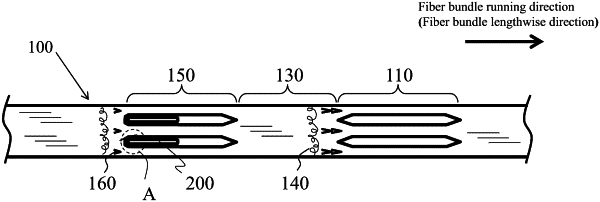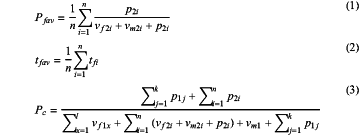| CPC C08J 5/06 (2013.01) [B29B 15/105 (2013.01); C08J 5/042 (2013.01)] | 9 Claims |

|
1. A fiber-reinforced resin material used for molding a fiber-reinforced resin that comprises a matrix resin and reinforcing fiber bundles A comprising chopped fiber bundles each including 100 or more single fibers, wherein a product of an average porosity within fiber bundles Pfav (−) represented by equation (1) and an average fiber bundle thickness tfav (mm) represented by equation (2) is 0 mm or more and 0.01 mm or less and a porosity of composite Pc (−) represented by equation (3) is 0.02 or more and 0.4 or less:
 wherein, i=1, 2, . . . n, j=1, 2, . . . k, x=1, 2, . . . l, which are integers, and n, k, l represent, respectively, the number of all fiber bundles A, the number of voids, and the number of fibers other than the fiber bundles A included in a photographed sectional view, each parameter is:
vf1: area occupied by fibers other than fiber bundles A (mm2)
vf2: area occupied by fibers in fiber bundles A (mm2)
vm1: resin layer area (mm2)
vm2: resin area in fiber bundles A (mm2)
p1: area of voids present in resin layer (mm2)
p2: area of voids present in fiber bundles A (mm2)
tf: thickness of fiber bundle A (mm),
and each parameter is a value calculated from image analysis after binarization of a sectional view prepared by observing a section of a cut surface of the fiber-reinforced resin material in its thickness direction with an optical microscope, and photographing it at effective pixels of 1,600 (H)×1,200 (V) and a photograph magnification of 300 times.
|